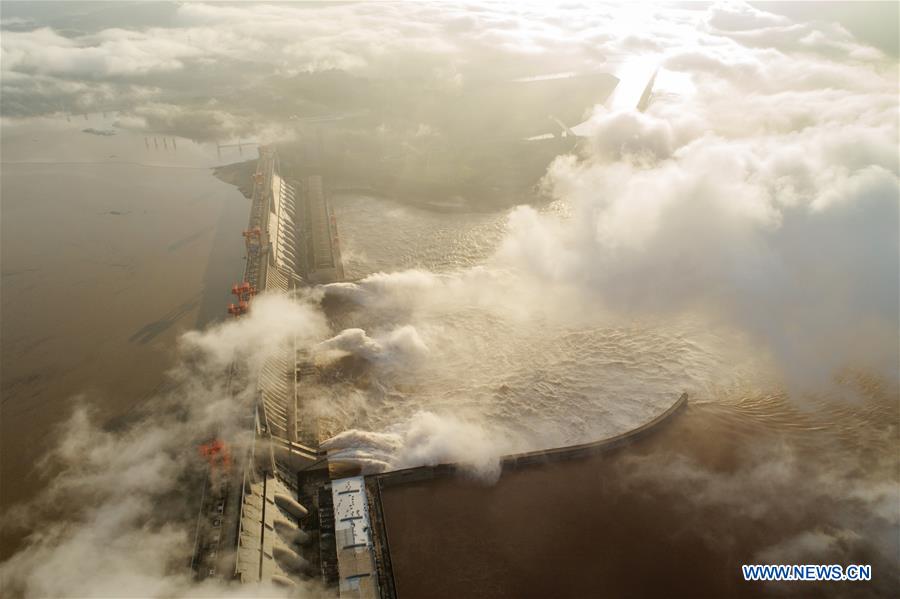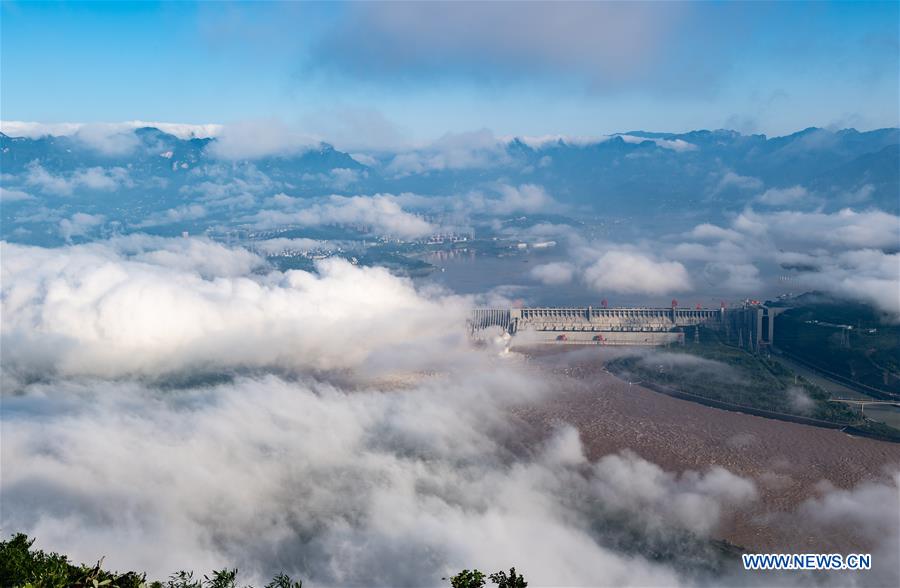Water projects stand test of strongest floods in 20 years
The Three Gorges Dam in Yichang, Hubei province, discharges excess floodwater on Monday. The dam has played a key role in flood relief efforts in the middle and lower reaches of the Yangtze River.
Aerial photo taken on July 27, 2020 shows floodwater being discharged from the Three Gorges Dam in Central China's Hubei province. [Photo/Xinhua]
"Some rainfall doesn't fall as forecast. Some downpours may be heavier than predicted. This could result in a flood control situation different from our expectations. In such cases, we have to adjust the operation plans accordingly and in a timely manner," he said.
Once rain falls in the Yangtze basin, the team is informed. Based on water levels and flow rates at hydrological stations and weather forecasts, they determine how to help those downstream avoid inundation.
Over 20 flood control experts regularly work with Chen's department, and they often work late into the night. Amid the complications and difficulties, he often knocks off at around 1 am, but sometimes works until 3 am.
The commission says there are 101 key water conservancy projects facilitating flood control efforts in the Yangtze basin this year, including 41 reservoirs, 46 flood detention areas, 10 pump stations and four water diversion projects.
Photo taken on July 27, 2020 shows floodwater being discharged from the Three Gorges Dam in Central China's Hubei province. [Photo/Xinhua]
The reservoirs can store 57.4 billion cubic meters of water and the flood detention areas another 59.1 billion cubic meters, it said.
Chen's department also must call all the water conservancy projects involved in the dynamic operational plans and ensure their implementation. "Communication needs to be done repeatedly," he said.
A lot of work has to be done at night. Though his home is only a half-hour drive away, Chen and his colleagues sleep in the office at times to be available when needed. They have to work without a day off during flood season.
"It's not easy for my two children to see me during flood season," he said. "Once they hear the doorbell, they know it's me. They are so excited that they rush to the door."
There are over 52,000 reservoirs in the Yangtze basin, and many discharge water before the rainy season to help accommodate floodwaters.



